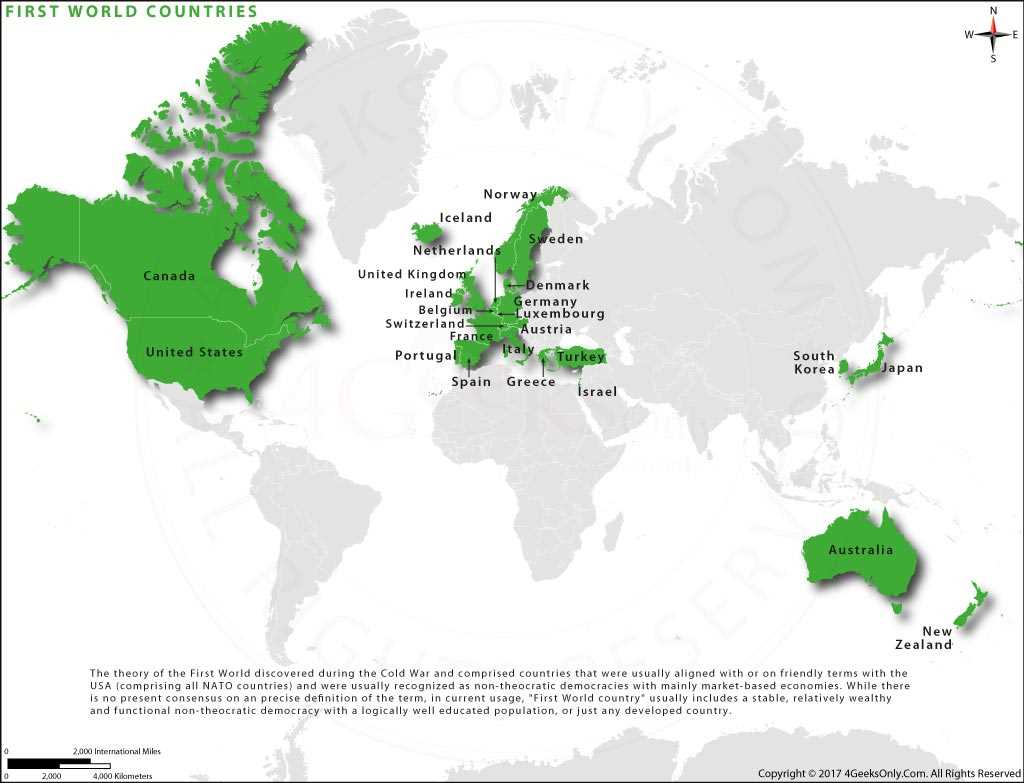Economy of First World Countries
The economy of first world countries is characterized by high levels of development, industrialization, and advanced technology. These nations have strong and stable economies that are capable of providing a high standard of living for their citizens.
First world countries typically have a diverse and robust economy, with a focus on sectors such as manufacturing, services, finance, and technology. They have well-developed infrastructure, including modern transportation systems, communication networks, and reliable utilities.
One of the key factors contributing to the success of first world economies is their emphasis on innovation and research and development. These countries invest heavily in education and encourage entrepreneurship, which leads to the creation of new industries and the development of cutting-edge technologies.
First world countries also have well-established financial systems and institutions. They have strong banking sectors, stock markets, and regulatory frameworks that promote transparency and stability. This enables businesses to access capital easily and facilitates investment and economic growth.
Another important aspect of the economy in first world countries is their emphasis on international trade. These nations are major players in global trade, exporting a wide range of goods and services. They have well-developed trade agreements and partnerships with other countries, which further enhances their economic growth and stability.
Conclusion
The economy of first world countries is characterized by high levels of development, industrialization, and advanced technology. These nations have diverse and robust economies, with a focus on sectors such as manufacturing, services, finance, and technology. They prioritize innovation and research and development, have well-established financial systems, and emphasize international trade. These factors contribute to their strong and stable economies, providing a high standard of living for their citizens.
Characteristics of Developed Nations

| Economic Stability | Developed nations have stable and well-established economies. They have high levels of productivity, advanced infrastructure, and a diverse range of industries. These economies are often driven by innovation, technology, and a skilled workforce. |
| High Standard of Living | First world countries generally have a high standard of living, with access to quality healthcare, education, and social services. Their citizens enjoy a comfortable lifestyle, with access to a wide range of consumer goods and services. |
| Strong Social Welfare Systems | Developed nations typically have well-developed social welfare systems that provide support and assistance to their citizens. These systems include healthcare, unemployment benefits, pensions, and other social safety nets. |
| Political Stability | First world countries generally have stable political systems with well-established democratic institutions. They have a rule of law, respect for human rights, and a transparent and accountable government. |
| Advanced Infrastructure | Developed nations have advanced infrastructure, including transportation networks, communication systems, and utilities. This infrastructure supports economic development and enables efficient movement of goods, services, and information. |
| High Level of Education | Education is highly valued in developed nations, and they have well-funded and comprehensive education systems. Their citizens have access to quality education from primary school to higher education, which helps foster innovation and economic growth. |
| Low Poverty Rates | First world countries generally have low poverty rates compared to developing nations. They have effective social welfare systems, strong economies, and policies in place to address poverty and inequality. |
These characteristics contribute to the overall development and prosperity of first world countries. They create an environment that fosters economic growth, social well-being, and a high quality of life for their citizens.
Industrialization in First World Countries
Industrialization has played a crucial role in the development and growth of first world countries. It has transformed these nations into economic powerhouses, leading to significant advancements in various sectors such as manufacturing, technology, and infrastructure.
One of the key characteristics of industrialization in first world countries is the shift from an agrarian-based economy to a manufacturing-based economy. This transition has resulted in the mass production of goods, leading to increased productivity and economic prosperity.
Industrialization has also led to the creation of jobs and improved living standards for the citizens of first world countries. The growth of industries has provided employment opportunities, attracting people from rural areas to urban centers in search of better economic prospects.
Furthermore, industrialization has paved the way for technological advancements in first world countries. The development of new machinery, tools, and techniques has revolutionized production processes, making them more efficient and cost-effective. This has not only boosted productivity but has also led to the creation of innovative products and services.
The impact of industrialization on infrastructure cannot be overlooked. First world countries have witnessed the construction of modern transportation systems, including railways, highways, and airports, which have facilitated the movement of goods and people. Additionally, the development of power plants and other essential infrastructure has ensured a reliable and uninterrupted supply of electricity and other utilities.
Industrialization has also had a significant impact on the environment. While it has contributed to economic growth, it has also resulted in environmental challenges such as pollution and depletion of natural resources. First world countries have recognized the need for sustainable practices and have implemented measures to mitigate these negative effects.

Emily Bibb simplifies finance through bestselling books and articles, bridging complex concepts for everyday understanding. Engaging audiences via social media, she shares insights for financial success. Active in seminars and philanthropy, Bibb aims to create a more financially informed society, driven by her passion for empowering others.
